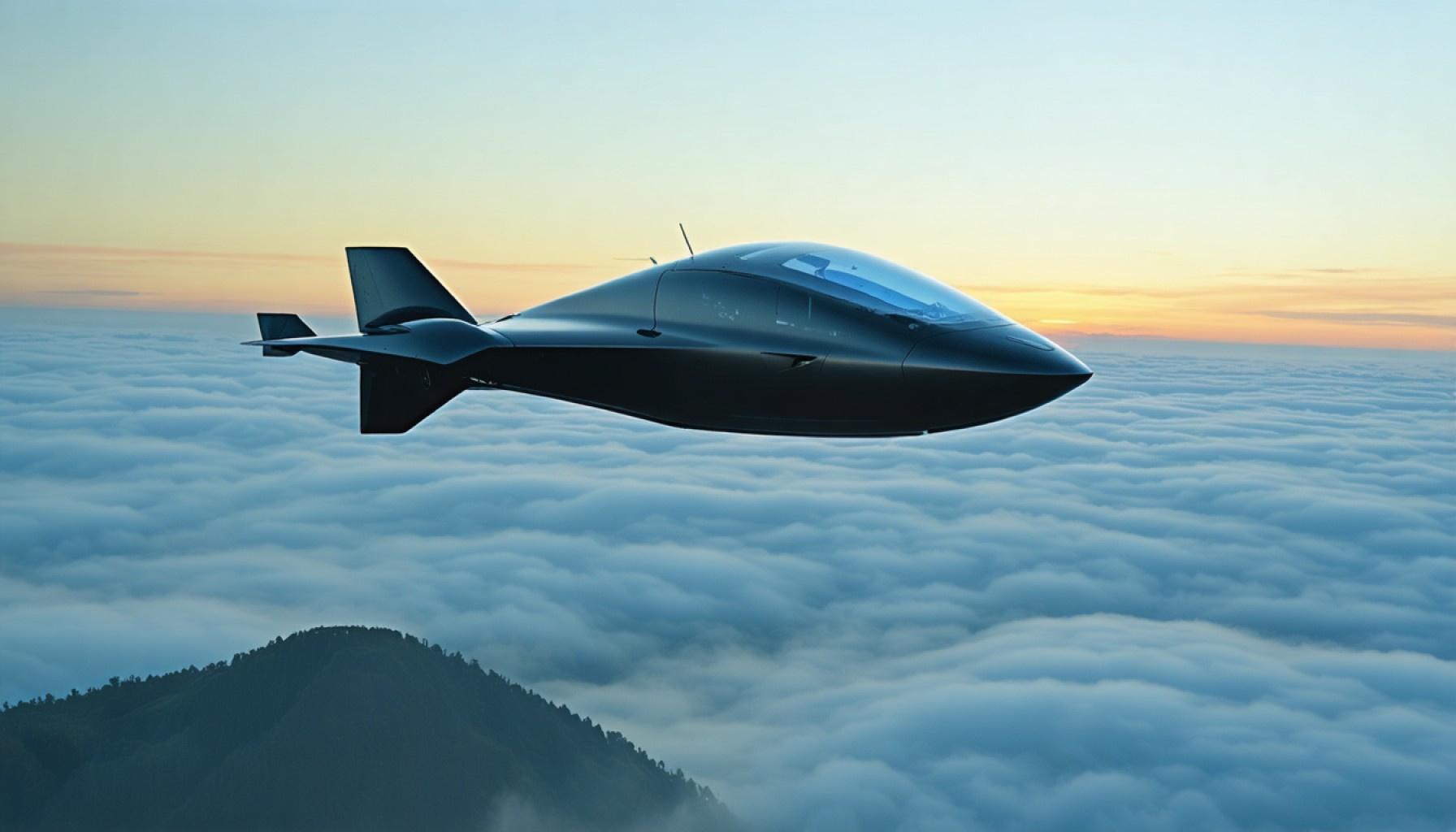- eVTOL aircraft may soon revolutionize urban mobility, offering a futuristic alternative to traditional city traffic.
- Joby Aviation, supported by Toyota’s $894 million investment, aims to lead with its S4 air taxi, capable of carrying four passengers up to 150 miles.
- Competitors like Archer Aviation are also in the race, though Joby’s vertically integrated approach offers distinct innovation benefits.
- Challenges include FAA certification and infrastructure setup in global cities like Dubai and New York City.
- Recent regulatory advances by the FAA mark progress toward making eVTOLs a mainstream transport option.
- While the potential is vast, investing in air mobility companies carries uncertainty, requiring cautious optimism.
Dream of escaping the chaos of city traffic by flying above it all? Electric Vertical Take-Off and Landing (eVTOL) aircraft could soon make that a reality. As these futuristic air taxis prepare to lift off, they’re poised to transform urban mobility forever, merging cutting-edge technology with visionary transport solutions.
A quiet revolution is unfolding with companies like Joby Aviation leading the charge. Their sleek S4 aircraft promises to soar across urban landscapes with a whisper, ferrying four passengers up to 150 miles on a single charge. Imagine zipping from Manhattan to Montauk amidst the clouds. This dream is fast becoming a tangible, investable reality.
Backing Joby’s vision is automotive giant Toyota, injecting significant capital and manufacturing expertise. Toyota’s investment in Joby exceeds $894 million, emphasizing their commitment to bringing air taxis to commercial viability.
Joby isn’t alone; competitors like Archer Aviation are racing to the skies, though Joby’s vertically integrated model promises unique advantages in innovation and performance. Yet this ambitious path is riddled with challenges, from achieving FAA certification to setting up operational infrastructure in places like Dubai and New York City.
The movement toward advanced air mobility is picking up speed with recent regulatory milestones. The Federal Aviation Administration’s new regulations pave the way for these electric marvels, marking significant progress toward a future where air taxis might become as common as today’s ride-shares.
As we inch closer to a Jetsons-like reality, investing in companies like Joby may seem enticing. However, proceed with caution: the skies might be limitless, but the path to profitability remains uncertain. For dreamers and daring investors, this might be a watch-and-wait game, keeping a keen eye on the horizon for the next breakthrough.
Discover Why eVTOL Air Taxis Might Just Be the Future of Urban Transportation!
How-To Steps & Life Hacks for Embracing eVTOLs
1. Understand the Technology: Electric Vertical Take-Off and Landing (eVTOL) aircraft are poised to change the way we commute. Familiarize yourself with how they work, which involves electric propulsion systems that enable quick vertical take-offs and efficient horizontal flights.
2. Stay Informed on Regulations: Regularly check updates from aviation authorities like the Federal Aviation Administration (FAA) to understand the progress and legal status of eVTOL operations in your area.
3. Explore Investment Opportunities: Assess companies such as Joby Aviation and Archer Aviation, evaluate their financial health, and consider if they align with your investment portfolio.
4. Plan for Adoption: Consider how eVTOLs could fit into your travel habits. As apps and platforms develop to integrate these air taxis, knowing how to access and utilize them will be key.
Real-World Use Cases
– Urban Commuting: eVTOLs could significantly reduce travel time in congested cities, offering a practical alternative to current road transport.
– Emergency Response: These aircraft can serve rescue operations by quickly reaching areas with limited ground access.
– Tourism: Potential for drones to provide aerial tours, allowing visitors to experience sights from new heights.
Market Forecasts & Industry Trends
The eVTOL market is projected to grow substantially, with some estimates predicting a value of over $30 billion by 2030. Key trends include increasing investment in the urban air mobility sector, advancements in battery technology, and partnerships between aviation and automotive industries. Sources like Deloitte provide insights into market dynamics.
Reviews & Comparisons
– Joby Aviation vs. Archer Aviation: Joby’s S4 boasts longer range and integration with Toyota’s manufacturing expertise, while Archer focuses on efficiency and scalability.
– Pros and Cons: Joby’s vertically integrated approach can streamline production, but Archer has made strides in partnerships to bolster market entry.
Controversies & Limitations
– Regulatory Hurdles: Achieving FAA certification remains a comprehensive process with stringent safety standards.
– Public Acceptance: Noise pollution, safety perceptions, and visual impact are concerns that may affect adoption.
Features, Specs & Pricing
– Joby S4: Offers a range of 150 miles, speeds up to 200 mph, and can carry four passengers. Pricing details are not publicly disclosed but target a competitive mark with ride-sharing services.
Security & Sustainability
– Safety Features: eVTOLs are designed with multiple redundant systems to ensure passenger safety.
– Sustainability: Electric propulsion reduces carbon emissions compared to traditional aircraft, aligning with global sustainability goals.
Insights & Predictions
eVTOLs are expected to revolutionize urban transport within the next decade, potentially integrating into the broader transport ecosystem seamlessly with infrastructure developments.
Tutorials & Compatibility
Future platforms are likely to require basic app navigation skills, similar to current ride-sharing apps, for booking and boarding eVTOLs.
Pros & Cons Overview
Pros:
– Environmentally friendly
– Reduced urban congestion
– Faster travel times
Cons:
– High initial costs
– Complex regulatory environment
– Infrastructure needs
Actionable Recommendations
– Investment: Approach cautiously and diversify interests beyond a single company.
– Stay Updated: Regularly follow industry reports and updates.
– Advocate for Smart Policies: Engage with policymakers to support infrastructure that can accommodate this technology.
As eVTOL technology edges closer to mainstream adoption, staying informed and adaptable will allow you to capitalize on the transition to a new era of transportation.
For more information on advancements in technology and innovation, consider visiting Wall Street Journal.



